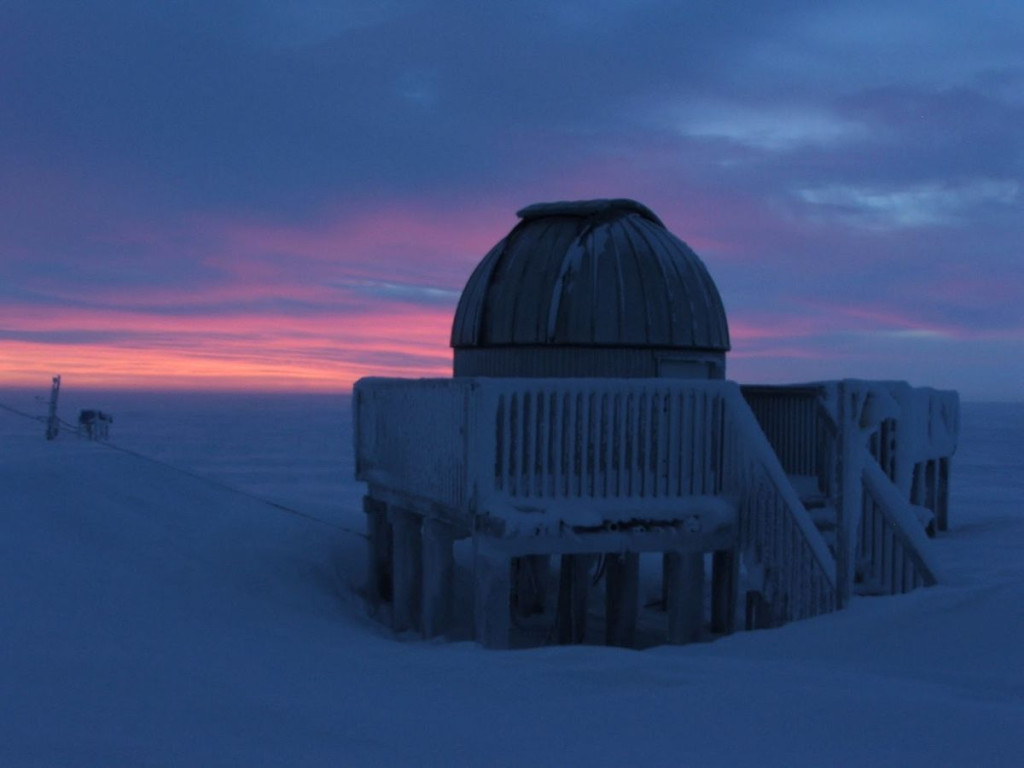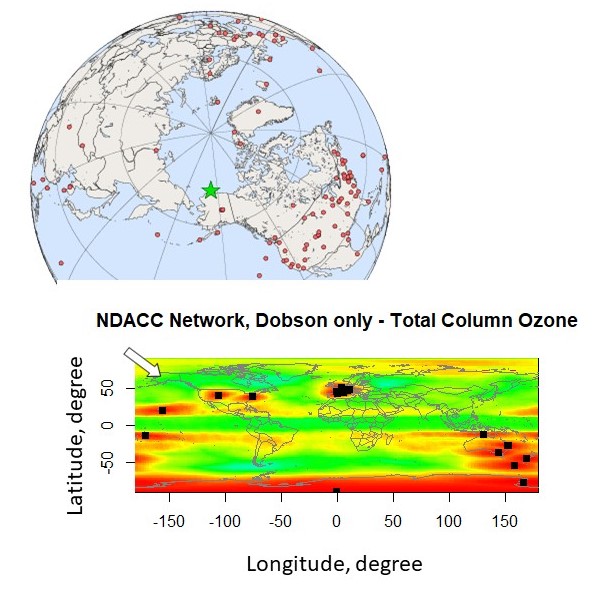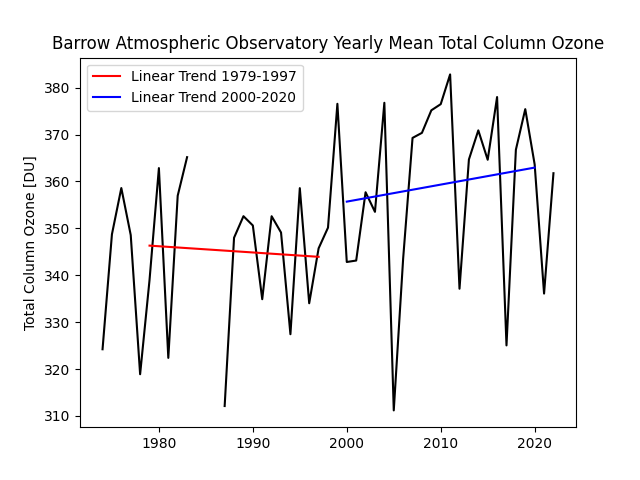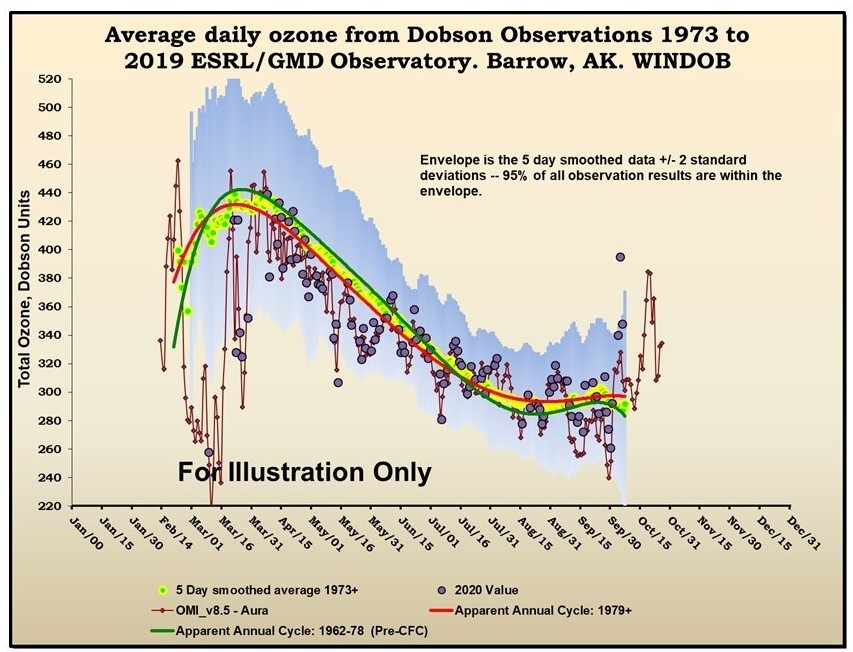Dobson Observations from Utqiaġvik, Alaska have been operated by the National Oceanic and Atmospheric Administration, Global Monitoring Laboratory since 1973 (Figure 1).
The Barrow Atmospheric Baseline Observatory (BRW), first established in 1973, is located near the northernmost point of the United States, at 71.323 N, 156.6114 W, about 8 km northeast of the village of Utqiaġvik (formerly Barrow), and well above the Arctic circle (Figure 2, map). Due to BRW’s high-latitude, Dobson observations against the sun are limited to the months of February through October. Of note, this long-term time series in the northern hemisphere was started before stratospheric ozone depletion was discovered in Antarctica. The large variability of Arctic ozone is related to unstable atmospheric mixing (polar vortex) that is impacted by Arctic Oscillations and sudden stratospheric warming events.
There are only a limited number of observing stations globally with long-term ozone records at high latitudes. Figure 2 (bottom) shows the spatial representativeness of NDACC Dobson stations. Red shows the high correlations of the station’s ozone observation to any other place on Earth. The map indicates that the Arctic region is not well-covered in ground-based total ozone observations.
The long-term record of ozone observations shows a decrease in the 1980s and an increase since 2000 (Figure 3). These positive trends corroborate the 2018 Ozone Assessment report and 2021 BAMS (Bernhard et al, 2020) total ozone analyses from satellite and ground-based data. Part of these changes is from the ozone recovery from Ozone-depleting substances and part from the interannual variability and change in circulation.
The Dobson record at Barrow provides validation for Aura/OMI and SNPP OMPS satellite observations. In 2020, the Dobson record captured spring times ozone depletion events in the Arctic (Feng et al, 2021).
Feng, W., Dhomse, S. S., Arosio, C., Weber, M., Burrows, J. P., Santee, M. L., Chipperfield, M. P. (2021). Arctic ozone depletion in 2019/20: Roles of chemistry, dynamics and the Montreal Protocol. Geophysical Research Letters, 48, e2020GL091911. https://doi.org/10.1029/2020GL091911.
Ozone and UV radiation—G. Bernhard., V. Fioletov, J.-U. Grooß, I. Ialongo, B. Johnsen, K. Lakkala, G. Manney and R. Muller [in “State of the Climate in 2019"]. (2020) Bull. Amer. Meteor. Soc.,101 (8), S274–S277, https://doi.org/10.1175/BAMS-D-20-0086.1.

Figure 1. Barrow, Alaska Dobson Observation Dome. Photo Credit: NOAA GMD Observatories Group

Figure 2: Location of the Global Monitoring Division Barrow Alaska Observatory on map, and highlighted with a white arrow in NDACC network map to show the importance of adding this measurement location

Figure 3: Yearly average ozone, which shows a decrease in ozone from 1979-1997, and a recovery from 2000-2020

Figure 4: 2020 Daily representative ozone measurements with additional information regarding 2 standard deviation envelope, OMI satellite retrieved ozone, and apparent annual cycle for comparison